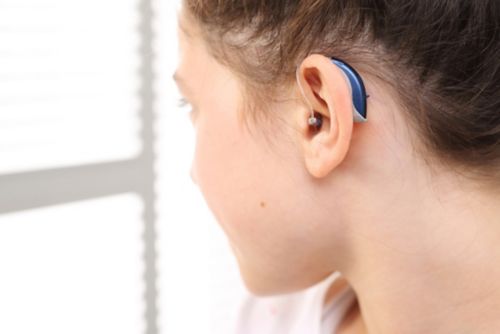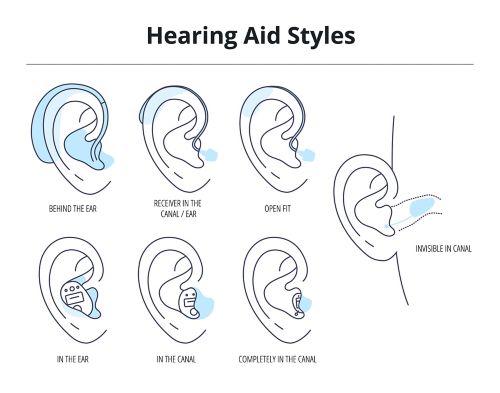What is a hearing aid?
A hearing aid is an electronic device that fits inside or behind the ear. It works to amplify sound or make it louder. Several types of hearing aids are available to help with hearing loss, including infants as young as 4 weeks of age. Most kinds of hearing loss can be helped by using hearing aids.
Benefits of hearing aids
If you have hearing loss, it can affect how people interact and communicate with you. It can also affect how well you do at work or school. For young children, hearing loss can affect speech, learning, and development.
Hearing aids do not make your hearing normal again. And they may not work well in some situations. However, hearing aids can help improve communication and function in daily life. For many people, hearing aids should allow you to hear others speaking at a comfortable level. This depends on the degree and type of hearing loss you have. If you have severe-to-profound hearing loss, hearing aids may not be able to amplify speech to levels that you can understand clearly. Hearing aids will still help you be aware of speech and sounds around you, which can provide helpful additions to visual and facial cues to improve your ability to communicate.
Even with hearing aids, you might have trouble hearing someone talking to you in places with a lot of background noise, like restaurants, classrooms, or other public places. You might also have trouble hearing at a distance, such as someone talking to you from another room.
Hearing aid features
Hearing aids come in different sizes, colors, and designs. However, they do have some parts that are alike:
- A microphone to pick up sound
- An amplifier to make the sound louder
- A receiver to send sound into the ear
- Batteries to power the hearing aid
Other features that are available in some hearing aids include:
- Volume control to increase or decrease loudness
- Feedback control to adjust whistling or unwanted noises
- T-coils (telephone coils) that can be used with wired telephones or some listening systems
- Programmed settings that can adjust to different listening environments
- Smartphone apps or remote controls to make it easier to adjust the device
Hearing aids vary in price by type, features, fitting, and customization. Cost is generally higher with more advanced settings and features. Some insurance plans may cover part or all the cost of hearing aids, but this can differ by plan.
Your audiologist will help you know which hearing aid style and features will best meet your needs based on your type of hearing loss, age, and daily activities.
Types of hearing aids
There are 4 general types of hearing aids:
- Behind-the-ear (BTE)
- In-the-ear (ITE)
- In-the-canal (ITC)
- Completely-in-the-canal (CITC)
These are the most common styles. However, special hearing aids can be built to meet a patient’s needs.
Hearing aid batteries
Batteries may last from several days to several weeks. This depends on how much power the hearing aid needs, the type of battery used, and how often you use an assistive listening device. You can buy replacement batteries at any pharmacy. Some hearing aids come with built-in rechargeable batteries.
Choosing the best hearing aid
Your audiologist will work with you to select a hearing aid based on your type of hearing loss, communication needs, and lifestyle. You will be asked about your typical hearing activities: at home, at work or school, and in your social and leisure time. You are an important partner in choosing a hearing aid. Your answers will help decide the type and style of hearing aid that is best for you. This includes what hearing aid features you need.
Behind-the-ear (BTE) hearing aids are best for young children. Teens and adults have a broader range of styles to choose from including behind the ear (BTE), in the ear (ITE), in the canal (ITC), and completely in the canal (CIC).
Find answers to questions about children and hearing aids.
Wearing 2 hearing aids may be recommended for people with hearing loss in both ears. This can improve listening in noisy places, helps the patient locate specific sounds, and offers better overall hearing.
Your audiologist will help you know which hearing aid is the best for you and will teach you how to use them properly. Be sure to follow all instructions for how to care for your hearing aid and schedule appointments for hearing care as recommended.


